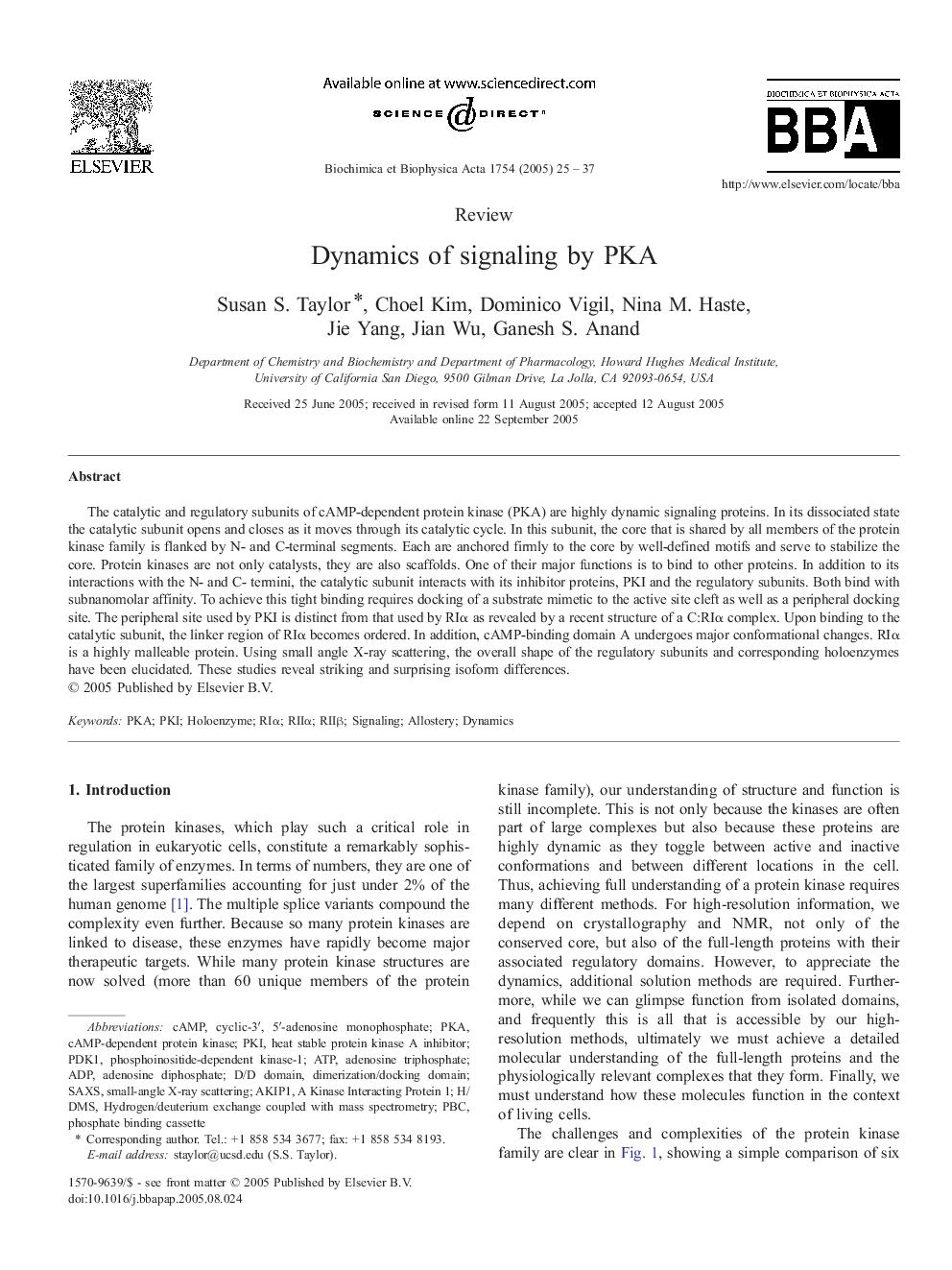| Article ID | Journal | Published Year | Pages | File Type |
|---|---|---|---|---|
| 9745070 | Biochimica et Biophysica Acta (BBA) - Proteins and Proteomics | 2005 | 13 Pages |
Abstract
The catalytic and regulatory subunits of cAMP-dependent protein kinase (PKA) are highly dynamic signaling proteins. In its dissociated state the catalytic subunit opens and closes as it moves through its catalytic cycle. In this subunit, the core that is shared by all members of the protein kinase family is flanked by N- and C-terminal segments. Each are anchored firmly to the core by well-defined motifs and serve to stabilize the core. Protein kinases are not only catalysts, they are also scaffolds. One of their major functions is to bind to other proteins. In addition to its interactions with the N- and C- termini, the catalytic subunit interacts with its inhibitor proteins, PKI and the regulatory subunits. Both bind with subnanomolar affinity. To achieve this tight binding requires docking of a substrate mimetic to the active site cleft as well as a peripheral docking site. The peripheral site used by PKI is distinct from that used by RIα as revealed by a recent structure of a C:RIα complex. Upon binding to the catalytic subunit, the linker region of RIα becomes ordered. In addition, cAMP-binding domain A undergoes major conformational changes. RIα is a highly malleable protein. Using small angle X-ray scattering, the overall shape of the regulatory subunits and corresponding holoenzymes have been elucidated. These studies reveal striking and surprising isoform differences.
Keywords
Related Topics
Physical Sciences and Engineering
Chemistry
Analytical Chemistry
Authors
Susan S. Taylor, Choel Kim, Dominico Vigil, Nina M. Haste, Jie Yang, Jian Wu, Ganesh S. Anand,
